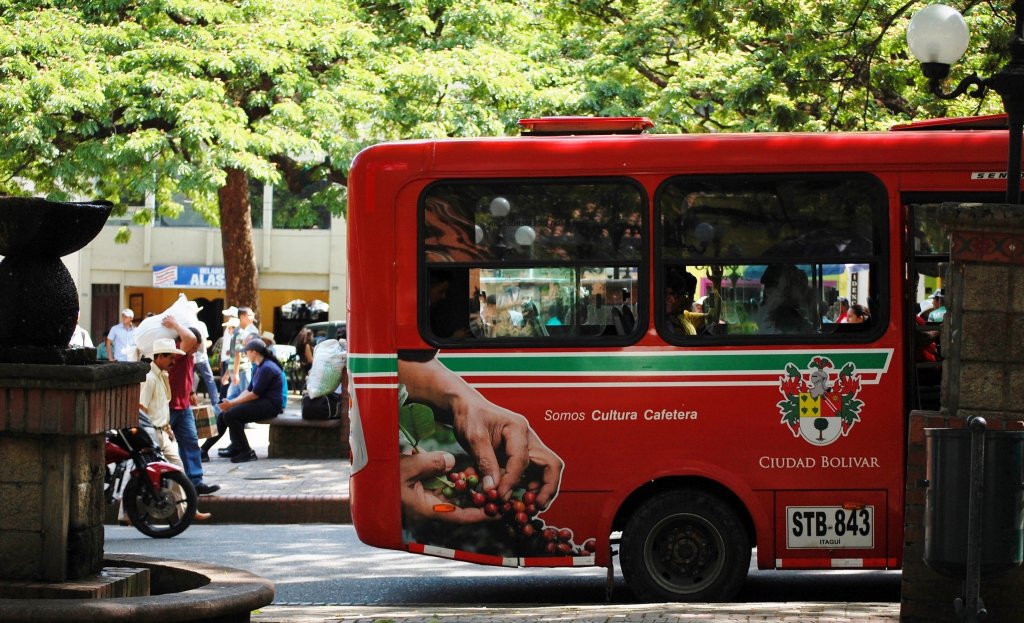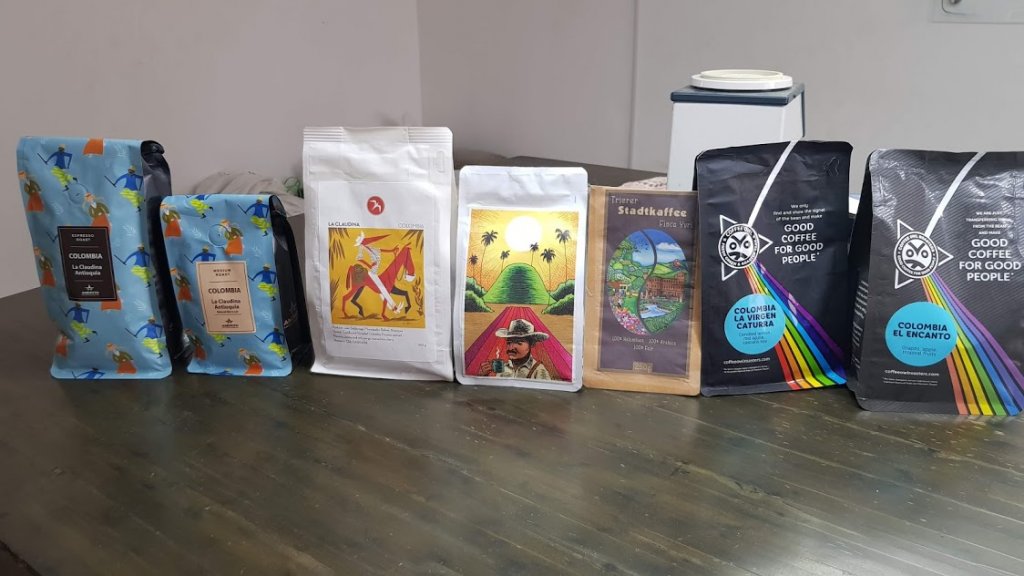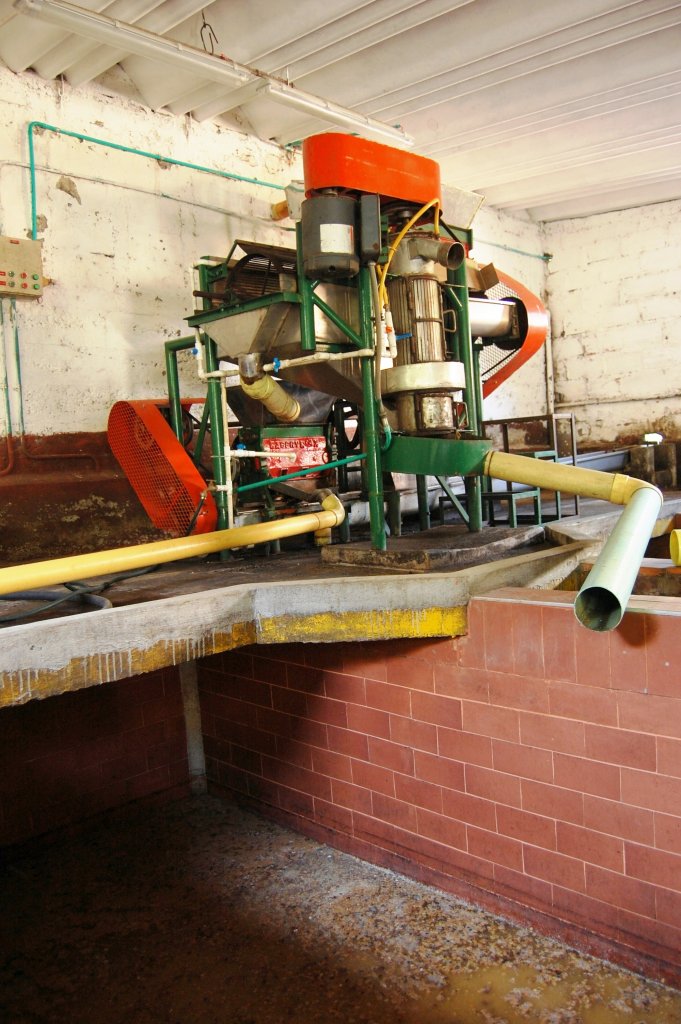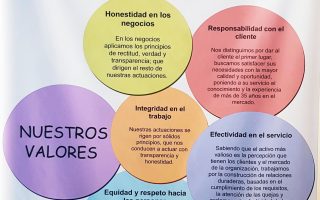A journey to the Colombian roots of “city coffee” of the german city of Trier
It’s a hot Sunday, but we haven’t noticed much of the heat on the winding roads in our small, air-conditioned rental car. The 104 kilometre stretch from Medellín (pronounced Medejin), the provincial capital of Antioquia (one of the largest coffee regions in Colombia) to Ciudad Bolivar took over two hours. Again and again the road was blocked by small landslides, clean-up work, construction sites or slow-moving trucks. The winding road did not stop the bus drivers, who steer their colourful buses through the landscape, from overtaking us at a risky pace over and over again. Yes, that’s Colombia.
Today we are researching the roots of Trier’s city coffee and want to find out where it is grown and which people produce it. We have an appointment with Juan, the manager of the two haciendas “El Encanto” and “La Claudina,” on which the “black gold” is cultivated. As we arrive in Ciudad Bolivar, we are positively surprised. It’s a lively little town, whose access road is lined with hotels and haciendas – but it doesn’t look like a tourist hub to us at all.

The central square of the city, pleasantly shaded by beautiful large trees, is full of people sitting in the numerous cafés or on stairs or simply standing around in small groups. Life in Colombia takes place outside because it’s warm and you might miss something if you stay at home. The people here are social and open.
Juan picks us up and we go out for something to eat. It is a typical Colombian lunch menu, consisting of a tasty fish soup, followed by breaded fish, coconut rice, some fried banana and an arepa (a kind of small flat bread made of corn). We talk about coffee, fair trade, direct imports, Juan’s study visit to Heidelberg, Germany and his work as a barista in Luxembourg. In the conversation we switch between German, English and Spanish, as each language has its advantages and disadvantages for our collective communication.

Juan asks us if we feel like having a coffee. Yes, of course! We head to the laboratory, where he and his colleagues make us try different types of coffee from different filter methods. The Chemex, the V70 – every method is there. Do they also know the typical German Melitta filter? I wonder. Of course, but for their coffee they prefer a different filter in which the water stays on the ground coffee a little longer before it drains into the pot. The filter paper is first carefully rinsed and the jug gently preheated at the same time. Only then does the roasted and ground coffee grown here enter the filter – it couldn’t be more fresh. We drink a different roast than the one we could buy in Trier, where the coffee is drunk a little weaker than in Germany. And it tastes a bit sour. Juan smiles, yes, this is the speciality in Colombian coffee, the fruity, slightly sour note. We admire the laboratory and marvel at the different packaging we see here, from Colombia to the whole world.
“About a third of our coffee goes to the german city Trier, especially as “Trier city coffee”. That’s good, because we get a fixed price there, the coffee is direct import for you. We would like to sell even more coffee this way, the demand should be even higher”, Juan says. But I don’t see a fairtrade seal on any of the packages. I didn’t catch whether the coffee I bought in the City of Trier had one, so I ask Juan. “Yes, we are not fairtrade certified, that’s true. But I’ll show you why it’s better for both sides,” says Juan, standing with a pencil against a glass panel on the wall. He paints me figures and graphics, years, production and purchase quantities. In the end, I understand his attitude: fairtrade is basically a good thing, it focuses on the fact that in the industrialized countries the customers often pay far too little for coffee, fruit, flowers, spices and other products from the countries of the global South. Thus, the Fairtrade seal raises awareness of this abuse and, through the fairtrade premium, also directly increases the producer’s profit. But there are also disadvantages: the exporter has to pay the costs for certification, which is an insurmountable hurdle for many producers, especially smaller ones. In addition, fairtrade, UTZ or the Rainforest Alliance only pay a fairtrade premium of approximately 20 cents (applies for the fairtrade company)! The rest of the price of the coffee, for example, is still subject to the current prices on the world market. “And you can certainly imagine that production is also subject to natural fluctuations. 2017 and 2018, for example, were catastrophically bad years for us. We were only able to harvest nearly 40% less coffee beans than usual. The market logic says that we should almost double the price. But it doesn’t work that way, because we have competition around the world and not all countries had bad harvests. Fortunately, we at least have a contract with Alfons Schramer (Managing Director, Mondo del Caffè) [1], which guarantees us a certain basic income, since we have a fixed price which, depending on the quality of the coffee, is between five and seven euro eighty per kilo. The price is not based on the world market price and therefore does not fluctuate as much. But in the last two years we still basically lost money. All in all, the whole fairtrade system is very eurocentric and that is extremely unfavourable for us”. “And” Juan adds, “we don’t have the fairtrade certificate, but Alfons Schramer did visit us here together with Nikolaus Bieger (rural development manager) and they checked everything according to the standards of FLO[2]“.
Thoughtfully we drink our now-cooled coffee. Quite unfair, I think – I can’t recall anytime in my life when the price of coffee I consume in Germany has suddenly doubled. Actually, it felt cheaper over the years. In the discount store in Germany I saw coffee with the fairtrade and the organic label for less than 10€ per kilo (around 11 USD)[4] – how can something like that work? Probably not at all, at least not really fair for everyone along the production chain. We as consumers have so little idea of the coffee farmers’ production conditions and problems. We still sit in Boxhagener Platz in Berlin, Darmstädter Marktplatz, Münchner Viktualienmarkt or in Neue Straße in Trier and drink our latte macchiatos, espressos or filtered coffee and the price doesn’t change as drastically as it should have due to the sometimes extreme crop failures.
But before we fall too far into thoughts about the injustice between producer and consumer countries, Juan is already ready for the next program point. “Now it’s time to visit the coffee plantation, before it gets dark!,” he shouts as we grab our stuff. Juan can’t drive us directly to the plantation, so we make our way to a neighboring one. I am a bit disappointed, because I was curious where exactly our coffee was grown. But when I have a look at my watch, I realize that we only have 2 hours of sunlight left, because it gets dark here shortly after 6 pm (all year round, because the equator cuts Colombia). We pack into the jeep and as we make our way up the steep and stony path I wonder what the coffee slopes of Juan’s hacienda will look like if this plantation is easy to access.
First we stop at the foot of the hill where the coffee plantations are located and are greeted by two dogs wagging their tails. We admire the garden in which there is also a mango tree, even the unripe green fruits smell delicious. Then we walk a bit further to the processing plant. It smells slightly alcoholic, and in one of the basins coffee beans swim in foamy water.

In these halls the coffee is washed, fermented, peeled and dried before it is packed in bags and ready for export. We look everywhere and take pictures while Juan explains the process[5] and answers all our questions.
Finally the off-road vehicle takes us a
little further up the hill, in some places a real challenge for both vehicle
and driver, but after only five minutes we finally reach a point where we can’t
go any further by car. “And how do the pickers get here?” I ask
myself and Juan. “Most of them have motorcycles that get them up here quite
well. But then, of course, it’s quite a hard job. In any weather, in the bright
sun as well as in pouring rain the coffee is being picked here. Today is
Sunday, there are no workers on the plantations and moreover it’s shoulder
season, only about 30 to 40 kilos per day ripen. The main harvest seasons are
June to July and October to December”. “And how much does a picker
earn? “The pickers here are mostly seasonal workers, many come from the
region, even from the village, but some come here just for the harvest. And
they are paid according to performance, per kilo they get 500 to 600 Colombian
pesos, which equals 15 to 18 euro cents. A picker can pick 150 to 250 kilograms
of coffee cherries per day and therefore earn between 22.5 and 45 euros per
day.
So the system is the same as for almost all harvesters, such as in Germany with
asparagus, for example, I think. The legal minimum wage of 828,116 Colombian
pesos[6] (equivalent to
about 235.7 €) would have been reached by the harvesters after 11 days of work
at the latest.



